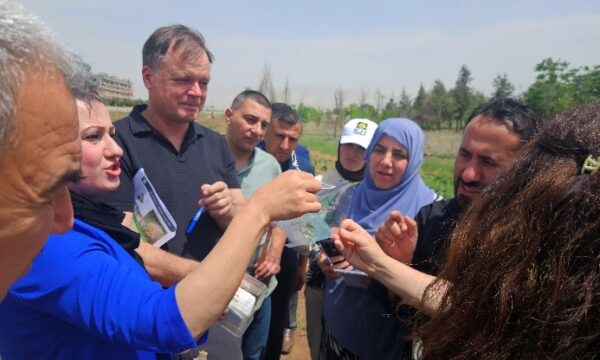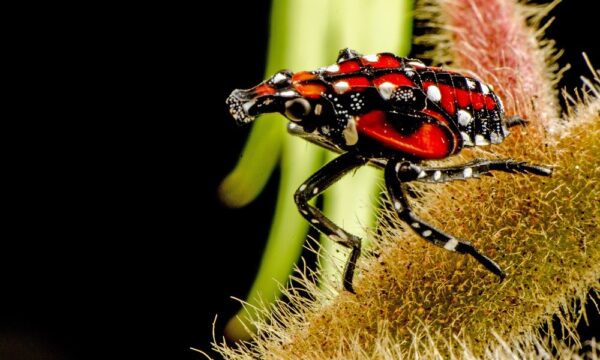By Sara Hendery. Reblogged from Entomology Today.

The fall armyworm (Spodoptera frugiperda) is causing significant damage to maize since its arrival in Africa in 2016, but it is in fact a polyphagous pest. Sorghum, a key cereal crop in Africa (shown here), is also vulnerable, and researchers are working on biocontrol and other integrated pest management methods in hopes of containing the fall armyworm’s impact around the world. (Photo credit: Feed the Future Innovation Lab for Integrated Pest Management)
Scientists from the International Crops Research Institute for the Semi-Arid Tropics (ICRISAT) in Niger say that 99 percent of the media and research coverage on the fall armyworm focuses on the invasive pest’s deadly threat to maize.
And deservedly so: The fall armyworm (Spodoptera frugiperda) is indeed a major problem for maize—more than 40 nations in Africa, where hundreds of millions of people depend on maize, are rushing to find a solution to the pest that can travel long distances and reproduce in large numbers.
However, management methods solely addressing the fall armyworm’s damage on one crop could leave communities that rely on additional drought-resistant crops, like sorghum, at a disadvantage.
“The fall armyworm is polyphagous, which means it feeds on various foods,” says Muni Muniappan, Ph.D., director of the Feed the Future Innovation Lab for Integrated Pest Management. “We saw serious damage on the sorghum fields we visited during our last trip to Niger and damage on millet, as well, the nation’s staple crop. Not only is a diversified diet important for food-insecure nations, but it’s very common for a community of people not to eat a certain food simply because it doesn’t look or taste like their preference, which means we can’t just look to save one crop in this crisis. A one-track, one-crop solution for a multi-track pest could be very dangerous.”
Sorghum ranks as the fifth most important cereal crop in the world, but it is the second most important cereal in Africa. Its value is insurmountable to Sahelian countries that have a dry, hot climate. In Niger, maize can typically only be grown during the short and singular rainy season, or under irrigation, on which Sahelian countries cannot consistently depend. Protein- and fiber-rich, sorghum is a nutritious food and is also a vital source of income given its many uses as fodder, for fermentation, industrial purposes, syrups, biofuel, and more.
1 Comment
Leave a Reply
Related News & Blogs
Biological control in action: Zambia’s field days on fighting fall armyworm
Experts from CABI recently held two field days and an expo in Zambia, showcasing innovative approaches to pest management to 584 farmers, agro-dealers and other stakeholders to help raise awareness of approaches to tackle the invasive fall armyworm (Sp…
11 June 2025





[…] Not Just Maize: Africa’s Fall Armyworm Crisis Threatens Sorghum, Other Crops, Too […]